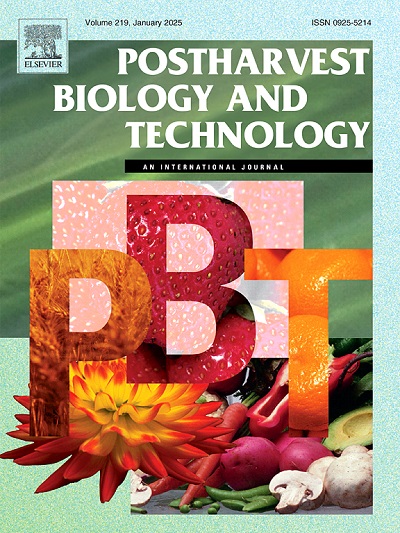Pichia kudriavzevii inhibits the growth of Colletotrichum gloeosporioides through 2-PE targeting cell membrane
IF 6.4
1区 农林科学
Q1 AGRONOMY
引用次数: 0
Abstract
Anthracnose is a major post-harvest disease affecting fruit and vegetables, causing losses due to fruit rot and decreased marketability, and the annual loss caused by anthracnose is at least within tens of billions of dollars in the world. This study evaluated the antifungal activity of Pichia kudriavzevii against Colletotrichum gloeosporioides. The substances in the fermentation solution were analyzed by gas chromatography-mass spectrometry (GC-MS), and the bacteriostatic experiments in vitro were carried out to determine 2-phenylethanol (2-PE) as the main inhibitory compound. In vitro assays demonstrated that 2-PE exerted inhibitory effects on colony growth, spore germination, germ tube elongation, and hyphal density. With the increase of 2-PE concentration, the inhibitory effect on C. gloeosporioides became stronger. When the concentration of 2-PE reached 1.50 g/L, the colony growth of C. gloeosporioides could be completely inhibited. Membrane-targeting assays revealed that 2-PE disrupted fungal cell membrane integrity. Transcriptomic analysis showed downregulation of genes involved in membrane synthesis (e.g., lanosterol synthase, CGGC5_1542) and genetic material synthesis (e.g., 60S ribonucleoprotein, CGGC5_9394). In vivo experiments confirmed that the lesion diameter of tomato and citrus anthracnose after 1.50 g/L 2-PE treatment was reduced by 69 % and 87 % compared with the control group. These findings highlight the potential of 2-PE as a natural antifungal agent targeting fungal membrane integrity and genetic material synthesis.
求助全文
约1分钟内获得全文
求助全文
来源期刊

Postharvest Biology and Technology
农林科学-农艺学
CiteScore
12.00
自引率
11.40%
发文量
309
审稿时长
38 days
期刊介绍:
The journal is devoted exclusively to the publication of original papers, review articles and frontiers articles on biological and technological postharvest research. This includes the areas of postharvest storage, treatments and underpinning mechanisms, quality evaluation, packaging, handling and distribution of fresh horticultural crops including fruit, vegetables, flowers and nuts, but excluding grains, seeds and forages.
Papers reporting novel insights from fundamental and interdisciplinary research will be particularly encouraged. These disciplines include systems biology, bioinformatics, entomology, plant physiology, plant pathology, (bio)chemistry, engineering, modelling, and technologies for nondestructive testing.
Manuscripts on fresh food crops that will be further processed after postharvest storage, or on food processes beyond refrigeration, packaging and minimal processing will not be considered.
 求助内容:
求助内容: 应助结果提醒方式:
应助结果提醒方式:


